Black Hawk Down (film)
7.6 /10 1 Votes
76% Rotten Tomatoes Country United StatesUnited Kingdom | 7.7/10 IMDb 74% Metacritic Genre Drama, History, Thriller Duration Language English | |||||||||||||||||||||||||||||||||
 | ||||||||||||||||||||||||||||||||||
Release date December 28, 2001 (2001-12-28) (Limited)January 18, 2002 (2002-01-18) (Worldwide) Cast (SSgt. Matt Eversmann), (Spec. John Grimes), (Capt. Mike Steele), (Lt. Col. Danny McKnight), (Sfc. Jeff Sanderson), (Sfc. Norm 'Hoot' Hooten) Similar movies Rambo: First Blood Part II , Seven Years in Tibet , Hart's War , Von Ryan's Express , Why We Fight , Faith of My Fathers Tagline Leave No Man Behind. | ||||||||||||||||||||||||||||||||||
black hawk down 2001 official trailer 1080p
The film takes place in 1993 when the U.S. sent special forces into Somalia to destabilize the government and bring food and humanitarian aid to the starving population. Using Black Hawk helicopters to lower the soldiers onto the ground, an unexpected attack by Somalian forces brings two of the helicopters down immediately. From there, the U.S. soldiers must struggle to regain their balance while enduring heavy gunfire.
Contents
- black hawk down 2001 official trailer 1080p
- Black hawk down trailer 4 academy award nominations hd
- Plot
- 75th Rangers
- Delta Force
- 160th SOAR Night Stalkers
- Miscellaneous
- Background and production
- Box office performance
- Critical response
- Accolades
- Similar Movies
- Controversies and inaccuracies
- References
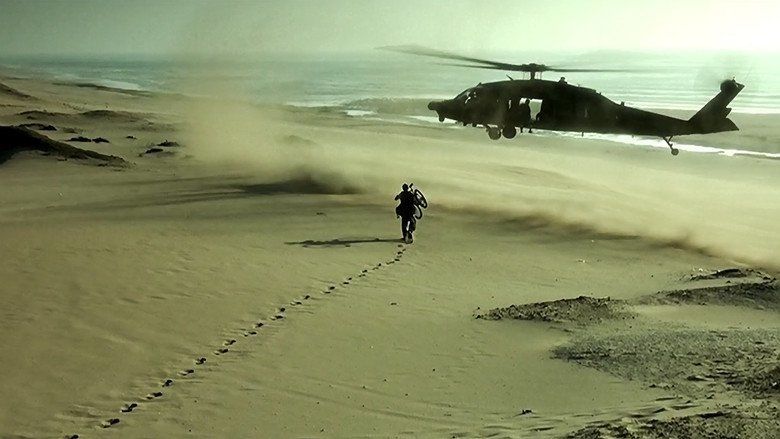
Black Hawk Down is a 2001 American-British war film directed by Ridley Scott. It is an adaptation of the 1999 book of the same name by Mark Bowden based on his series of articles published in The Philadelphia Inquirer. The 29-part series chronicled the events of a 1993 raid in Mogadishu by the U.S. military aimed at capturing faction leader Mohamed Farrah Aidid and the ensuing battle.
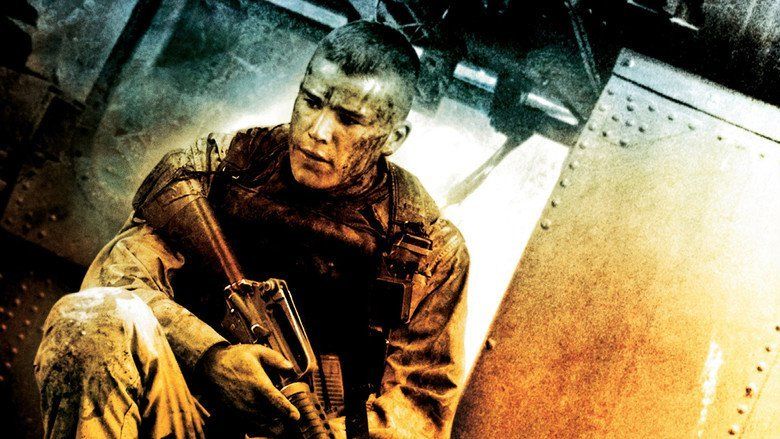
The film features a large ensemble cast, including Josh Hartnett, Eric Bana, Ewan McGregor, Tom Sizemore, William Fichtner, Jason Isaacs, and Sam Shepard. It won two Oscars for Best Film Editing and Best Sound Mixing at the 74th Academy Awards. The movie was received positively by many American film critics, but was strongly criticized by a number of foreign groups and military officials.
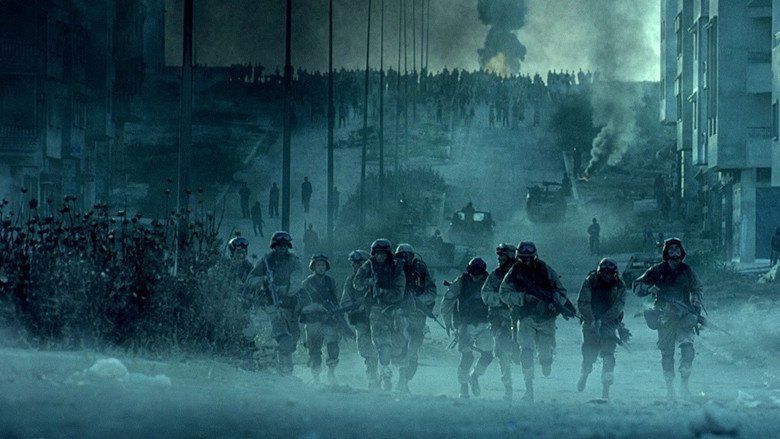
When U.S. Rangers and an elite Delta Force team attempt to kidnap two underlings of a Somali warlord, their Black Hawk helicopters are shot down, and the Americans suffer heavy casualties, facing intense fighting from the militia on the ground.
Black hawk down trailer 4 academy award nominations hd
Plot

In 1993, following the ousting of the central government and start of a civil war, a major United Nations military operation in Somalia is authorized with a peacekeeping mandate. After the bulk of the peacekeepers are withdrawn, the Mogadishu-based militia loyal to Mohamed Farrah Aidid have declared war on the remaining UN personnel. In response, U.S. Army Rangers, Delta Force counter-terrorist operators, and 160th SOAR aviators are deployed to Mogadishu to capture Aidid, who has proclaimed himself president of the country.
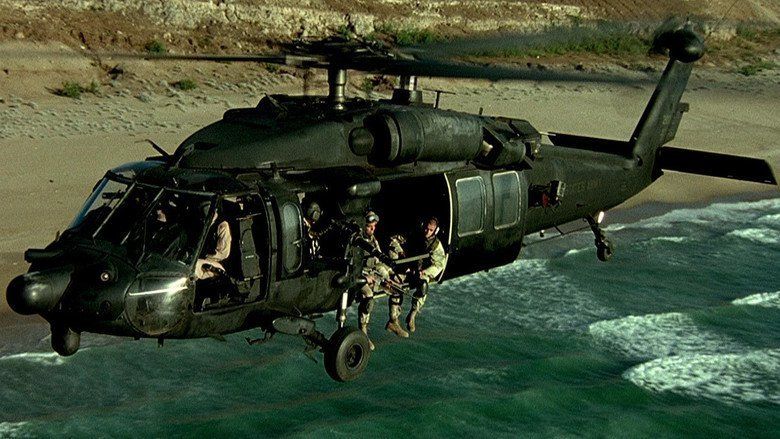
To cement his power and subdue the population in the south, Aidid and his militia seize Red Cross food shipments, while the UN forces are powerless to directly intervene. Outside Mogadishu, Rangers and Delta Force operators capture Osman Ali Atto, a faction leader selling arms to Aidids militia. Shortly thereafter, a mission is planned to capture Omar Salad Elmi and Abdi Hassan Awale Qeybdiid, two of Aidids top advisers.
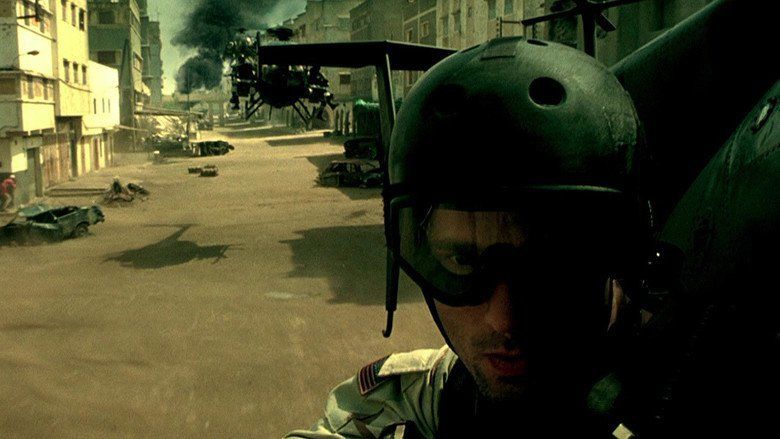
The U.S. forces include experienced men as well as new recruits, including PFC Todd Blackburn and a desk clerk, SPC Grimes, going on his first mission. When his Lieutenant is removed from duty after having an epileptic seizure, SSG Matthew Eversmann is placed in command of Ranger Chalk Four, his first command.The misson launch code was Irene.
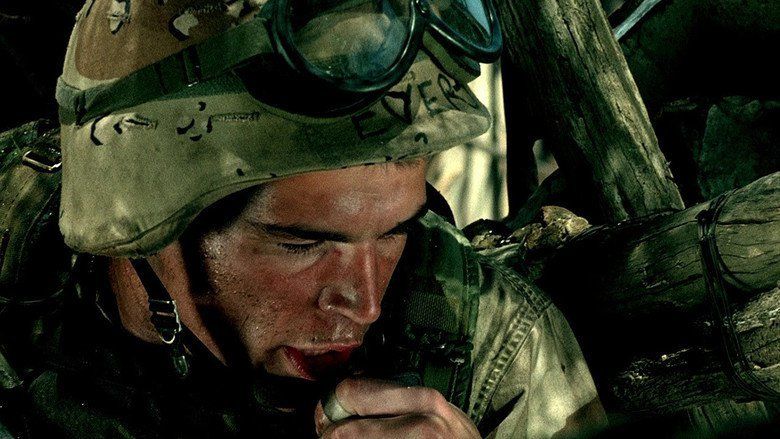
The operation begins and Delta Force operators capture Aidids advisers inside the target building. The Rangers and helicopters escorting the ground-extraction convoy take heavy fire, while Eversmanns Chalk Four is dropped a block away by mistake. Blackburn is severely injured after falling from one of the Black Hawk helicopters, so three Humvees led by SSG Jeff Struecker are detached from the convoy to return Blackburn to the UN-held Mogadishu Airport.
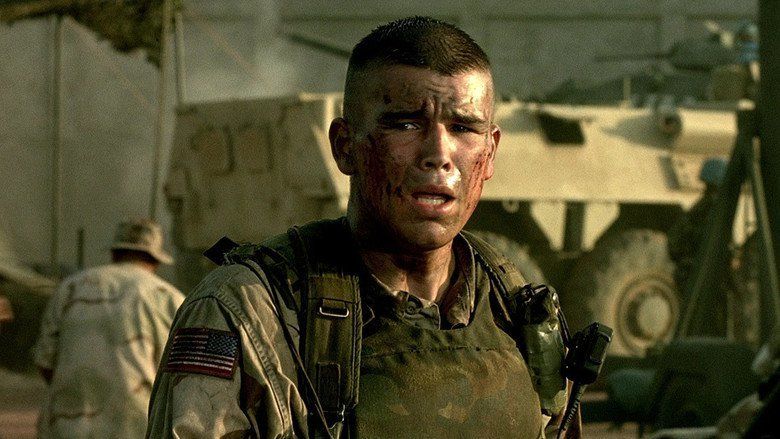
SGT Dominick Pilla is shot and killed just as Strueckers column departs, and shortly thereafter Black Hawk Super Six-One, piloted by CWO Clifton "Elvis" Wolcott, is shot down by a rocket-propelled grenade (RPG) and crashes deep within the city. Both pilots are killed, the two crew chiefs are wounded, and one Delta Force sniper on board escapes in another helicopter.
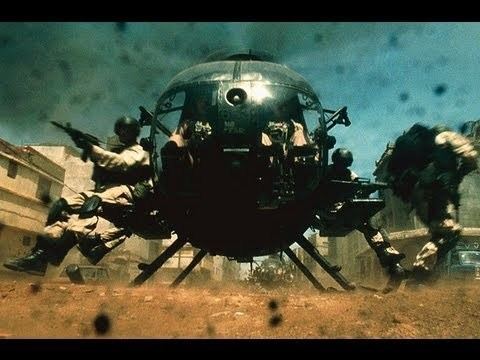
The ground forces are rerouted to converge on the crash site. The Somali militia erects roadblocks, and LTC Danny McKnights Humvee is unable to reach the crash site, while sustaining heavy casualties. Meanwhile, two Ranger Chalks, including Eversmanns unit, reach Super-Six Ones crash site and set up a defensive perimeter to await evacuation with the two wounded men and the fallen pilots. In the interim, Super Six-Four, piloted by CWO Michael Durant, is also shot down by an RPG and crashes several blocks away.

With CPT Mike Steeles Rangers pinned down and sustaining heavy casualties, no ground forces can reach Super Six-Four s crash site nor reinforce the Rangers defending Super Six-One. Two Delta Force snipers, SFC Randy Shughart and MSG Gary Gordon are inserted by helicopter to Super Six-Four s crash site, where they find Durant still alive. The site is eventually overrun, Gordon and Shughart are killed, and Durant is captured by Aidids militia.

McKnights column gives up the attempt to reach Six-Ones crash site and returns to base with their prisoners and the casualties. The men prepare to go back to extract the Rangers and the fallen pilots, and MG Garrison sends LTC Joe Cribbs to ask for reinforcements from the 10th Mountain Division, including Malaysian and Pakistani armored units.

As night falls, Aidids militia launch a sustained assault on the trapped Americans at Super Six-Ones crash site. The militants are held off throughout the night by strafing runs and rocket attacks from AH-6J Little Bird helicopter gunships of the Nightstalkers, until the 10th Mountain Divisions relief column is able to reach the Americans. The wounded and casualties are evacuated in the vehicles, but a handful of Rangers and Delta Force soldiers are forced to run from the crash site back to the stadium, in the UN Safe Zone.
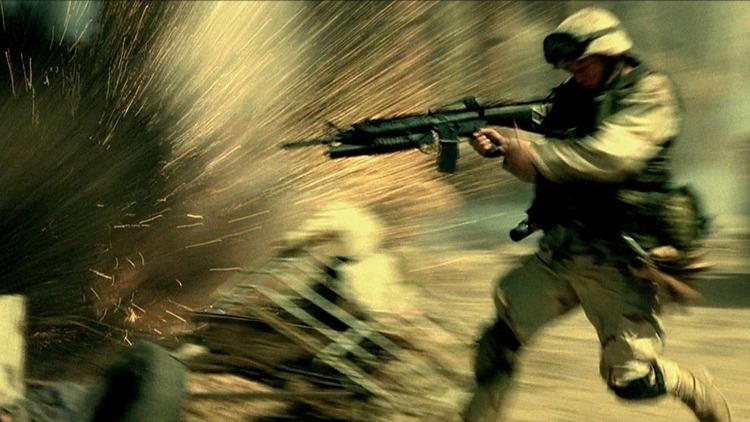
The closing credits detail the results of the raid: 19 American soldiers were killed, with over 1,000 Somali militants and civilians dead. Durant was released after 11 days of captivity. Delta Force snipers Gordon and Shughart were the first soldiers to be awarded the Medal of Honor posthumously since the Vietnam War. Two weeks later, President Bill Clinton withdrew the Delta Force and Rangers from Somalia. Major General William F. Garrison accepted full responsibility for the outcome of the raid. On August 1, 1996, Aidid was killed in a battle with a rival faction. General Garrison retired the following day.
75th Rangers
Delta Force
160th SOAR – Night Stalkers
Miscellaneous
Background and production
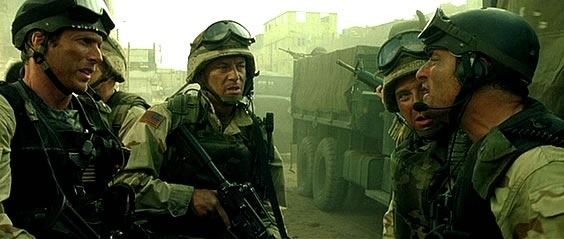
Adapting Black Hawk Down: a Story of Modern War by Mark Bowden was the idea of director Simon West, who suggested to Jerry Bruckheimer that he should buy the film rights and let West direct. West moved on to direct Lara Croft: Tomb Raider (2001) instead.
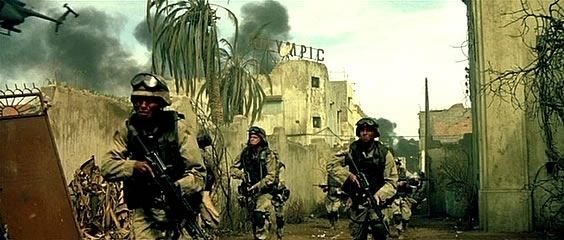
Ken Nolan was credited as screenwriter, and others contributed uncredited: Mark Bowden wrote an adaptation of his own book, Steven Gaghan was hired to do a rewrite, Steven Zaillian and Ezna Sands rewrote the majority of the Gaghan and Nolans work, Sam Shepard (MGen. Garrison) wrote some of his dialogue, and Eric Roth wrote Josh Hartnett and Eric Banas concluding speeches. Ken Nolan was on set for four months rewriting his script and the previous work by Gaghan, Zaillian, and Bowden. He was given sole screenwriting credit by a WGA committee.
Filming began in March 2001 in Kenitra, Morocco, and concluded in late June.
The book relied on a dramatization of participant accounts, which were the basis of the movie. SPC John Stebbins was renamed as fictional "John Grimes." Stebbins had been convicted by court martial, in 1999, for sexually assaulting his daughter. Mark Bowden said the Pentagon had requested the change. Bowden wrote early screenplay drafts, before Bruckheimer gave it to screenwriter Nolan. The POW-captor conversation, between pilot Mike Durant and militiaman Firimbi, is from a Bowden script draft.
For military verisimilitude, the Ranger actors took a crash, one-week Ranger familiarization course at Fort Benning, the Delta Force actors took a two-week commando course from the 1st Special Warfare Training Group at Fort Bragg, and Ron Eldard and the actors playing 160th SOAR helicopter pilots were lectured by captured aviator Michael Durant at Fort Campbell. The U.S. Army supplied the materiel and the helicopters from the 160th Special Operations Aviation Regiment. Most pilots (e.g., Keith Jones, who speaks some dialogue) had participated in the historic battle on October 3–4, 1993.
On the last day of their week-long Army Ranger orientation at Fort Benning, the actors who portrayed the Rangers received letters slipped under their doors. It thanked them for their hard work, and asked them to "tell our story true", signed with the names of the men who died in the Mogadishu firefight. A platoon of Rangers from B-3/75 did the fast-roping scenes and appeared as extras; John Collette, a Ranger Specialist during the battle, served as a stunt performer.
Many of the actors bonded with the soldiers who trained them for their roles. Actor Tom Sizemore said, "What really got me at training camp was the Ranger Creed. I dont think most of us can understand that kind of mutual devotion. Its like having 200 best friends and every single one of them would die for you".
Although the filmmakers considered filming in Jordan, they found the city of Amman too built up and landlocked. Scott and production designer Arthur Max subsequently turned to Morocco, where they had previously worked on Gladiator. Scott preferred that urban setting for authenticity. Most of the film was photographed in the cities of Rabat and Sale; the Task Force Ranger base sequences were filmed at Kenitra.
To keep the film at a manageable length, 100 key figures in the book were condensed to 39. The movie also does not feature any Somali actors. Additionally, no Somali consultants were hired for accuracy, according to writer Bowden.
The film features soldiers wearing helmets with their last names on them. Although this was not accurate, director Ridley Scott used this device to help the audience distinguish among the characters because "they all look the same once the uniforms are on".
Box office performance
Black Hawk Down had a limited release in four theaters on December 28, 2001, in order to be eligible for the 2001 Oscars. It earned $179,823 in its first weekend, averaging $44,956 per theater. On January 11, 2002, the release expanded to 16 theaters and continued to do well with a weekly gross of $1,118,003 and an average daily per theater gross of $9,982. On January 18, 2002, the film had its wide release, opening at 3,101 theaters and earning $28,611,736 in its first wide release weekend to finish first at the box office for the weekend. Opening on the Martin Luther King holiday, the film grossed $5,014,475 on the holiday of Monday, January 21, 2002, for a 4-day weekend total of $33,628,211. Only Titanic had previously grossed more money over the Martin Luther King holiday weekend. Black Hawk Down finished first at the box office during its first three weeks of wide release. When the film was pulled from theatres on April 14, 2002, after its 15th week, it had grossed $108,638,746 domestically and $64,350,906 overseas for a worldwide total of $172,989,651.
Critical response
The film received many positive reviews from mainstream critics. Empire magazine gave it a verdict of "ambitious, sumptuously framed, and frenetic, Black Hawk Down is nonetheless a rare find of a war movie which dares to turn genre convention on its head". Film critic Mike Clark of USA Today wrote that the film "extols the sheer professionalism of Americas elite Delta Force – even in the unforeseen disaster that was 1993s Battle of Mogadishu," and praised Scotts direction: "in relating the conflict, in which 18 Americans died and 70-plus were injured, the standard getting-to-know-you war-film characterizations are downplayed. While some may regard this as a shortcoming, it is, in fact, a virtue". It has a 76% "Certified Fresh" rating on Rotten Tomatoes and a rating of 74 on Metacritic.
The film has had a small cultural legacy, which has been studied academically by media analysts dissecting how media reflects American perceptions of war. Newsweek writer Evan Thomas considered the movie one of the most culturally significant films of the George W. Bush presidency. He suggested that although the film was presented as being antiwar, it was at its core prowar. He further wrote that "though it depicted a shameful defeat, the soldiers were heroes willing to die for their brothers in arms[...] The movie showed brutal scenes of killing, but also courage, stoicism and honor[...] The overall effect was stirring, if slightly pornographic, and it seemed to enhance the desire of Americans for a thumping war to avenge 9/11."
Stephen A. Klien, writing in Critical Studies in Media Communication, argued that the films sensational rendering of war had the effect of encouraging audiences to empathize with the films pro-soldier leitmotif. He suggested that this in turn served to "conflate personal support of American soldiers with support of American military policy" and discourage "critical public discourse concerning justification for and execution of military interventionist policy."
Accolades
Black Hawk Down received four Academy Award nominations for Best Director (lost to A Beautiful Mind) and Best Cinematography (lost to The Lord of the Rings: The Fellowship of the Ring) and won two Oscars for Best Sound and Best Film Editing. It also received three BAFTA Award nominations for Best Cinematography, Best Sound and Best Editing.
Similar Movies
Hans Zimmer composed the music for Black Hawk Down and Pearl Harbor. Eric Bana appears in Black Hawk Down and Lone Survivor. We Were Soldiers (2002). Tom Size appears in Black Hawk Down and Saving Private Ryan. Hans Zimmer composed the music for Black Hawk Down and The Thin Red Line.
Controversies and inaccuracies
Soon after Black Hawk Down???s release, the Somali Justice Advocacy Center in California denounced what they felt was its brutal and dehumanizing depiction of Somalis and called for its boycott.
In a radio interview, Brendan Sexton, an actor who briefly appeared in the movie, said the version of the film which made it onto theater screens significantly differed from the one recounted in the original script. According to him, many scenes asking hard questions of the U.S. troops with regard to the violent realities of war, the true purpose of their mission in Somalia, etc., were cut out.
In a review featured in The New York Times, film critic Elvis Mitchell expressed dissatisfaction with the films "lack of characterization", and opined that the film "reeks of glumly staged racism". Owen Gleiberman and Sean Burns, the film critics for the mainstream magazine Entertainment Weekly and the alternative newspaper Philadelphia Weekly, respectively, echoed the sentiment that the depiction was racist. Similarly, American film critic Wheeler Winston Dixon found the films "absence of motivation and characterization" disturbing, and wrote that while American audiences might find the film to be a "paean to patriotism", other audiences might find it to be a "deliberately hostile enterprise"; nevertheless, Dixon lauded the films "spectacular display of pyrotechnics coupled with equally adroit editing." Jerry Bruckheimer, the films producer, rejected such claims on The OReilly Factor, putting them down to political correctness in part due to Hollywoods liberal leanings.
Somali nationals charge that the African actors chosen to play the Somalis in the film do not in the least bit resemble the racially unique peoples of the Horn of Africa nor does the language they communicate in sound like the Afro-Asiatic tongue spoken by the Somali people. The abrasive manner in which lines are delivered and the films inauthentic vision of Somali culture, they add, fails to capture the tone, mannerisms and spirit of actual life in Somalia. At one screening in Somalia, young men cheered whenever an American soldiers character was shot on screen.
In an interview with the BBC, the faction leader Osman Ali Atto said that many aspects of the film are factually incorrect. He took exception with the ostentatious character chosen to portray him; Ali Atto does not look like the actor who portrayed him, smoke cigars, or wear earrings, facts which were later confirmed by SEAL Team Six sniper Howard E. Wasdin in his 2012 memoirs. Wasdin also indicated that while the character in the movie ridiculed his captors, Atto in reality seemed concerned that Wasdin and his men had been sent to kill rather than apprehend him. Atto additionally stated that he was not consulted about the project or approached for permission, and that the film sequence re-enacting his arrest contained several inaccuracies:
First of all when I was caught on 21 September, I was only travelling with one Fiat 124, not three vehicles as it shows in the film[...] And when the helicopter attacked, people were hurt, people were killed[...] The car we were travelling in, (and) I have got proof, it was hit at least 50 times. And my colleague Ahmed Ali was injured on both legs[...] I think it was not right, the way they portrayed both the individual and the action. It was not right.
Navy SEAL Wasdin similarly remarked that while olive green military riggers tape was used to mark the roof of the car in question in the movie, his team in actuality managed to track down Attos whereabouts using a much more sophisticated technique involving the implantation of a homing device in a cane. The cane was then presented as a gift for Atto to a contact who routinely met with him, which eventually led the team directly to the faction leader.
Malaysian military officials whose own troops were involved in the fighting have likewise raised complaints regarding the films accuracy. Retired Brigadier-General Abdul Latif Ahmad, who at the time commanded Malaysian forces in Mogadishu, told the AFP news agency that Malaysian moviegoers would be under the wrong impression that the real battle was fought by the Americans alone, while Malaysian troops were "mere bus drivers to ferry them out".While Malaysian Special Forces helped in the extraction phase
In the film, Rangers are seen removing the rear ballistic plates from their Ranger Body Armor, but at the time the film is set (1993) Ranger Body Armor did not have rear ballistic plates, which where added in 1995 due to lessons learned in Mogadishu.
General Pervez Musharraf, who later became President of Pakistan after a coup, similarly accused the filmmakers of not crediting the work done by the Pakistani soldiers. In his autobiography In the Line of Fire: A Memoir, Musharraf wrote:
The outstanding performance of the Pakistani troops under adverse conditions is very well known at the UN. Regrettably, the film Black Hawk Down ignores the role of Pakistan in Somalia. When U.S. troops were trapped in the thickly populated Madina Bazaar area of Mogadishu, it was the Seventh Frontier Force Regiment of the Pakistan Army that reached out and extricated them. The bravery of the U.S. troops notwithstanding, we deserved equal, if not more, credit; but the filmmakers depicted the incident as involving only Americans.
References
Black Hawk Down (film) WikipediaBlack Hawk Down (film) IMDbBlack Hawk Down (film) Rotten TomatoesBlack Hawk Down (film) MetacriticBlack Hawk Down (film) themoviedb.org
